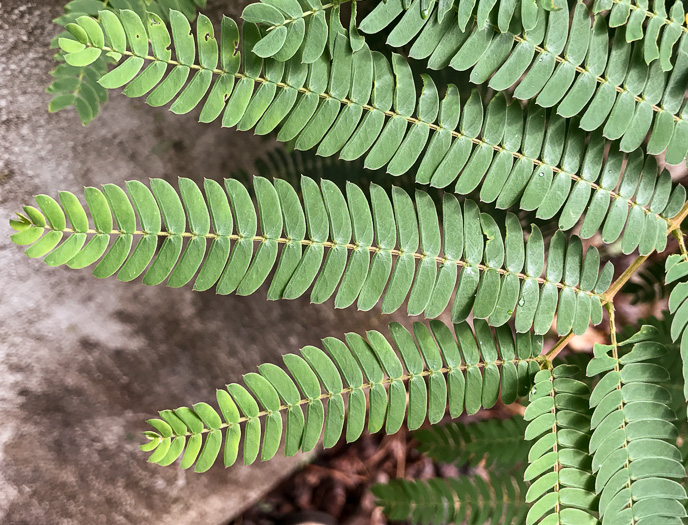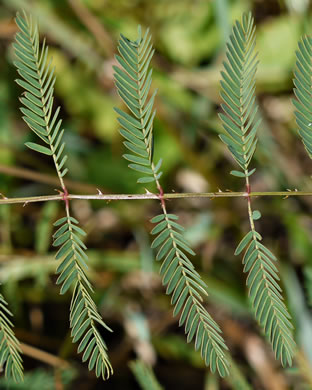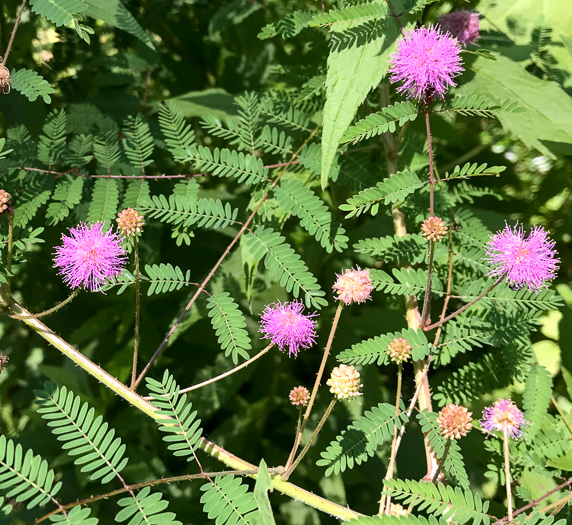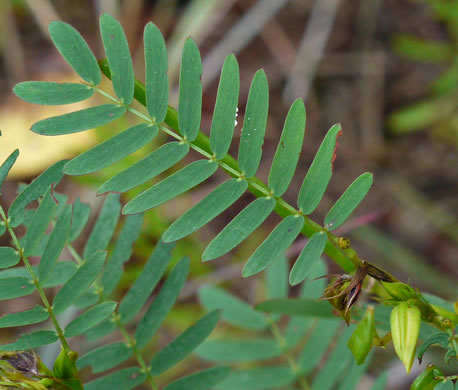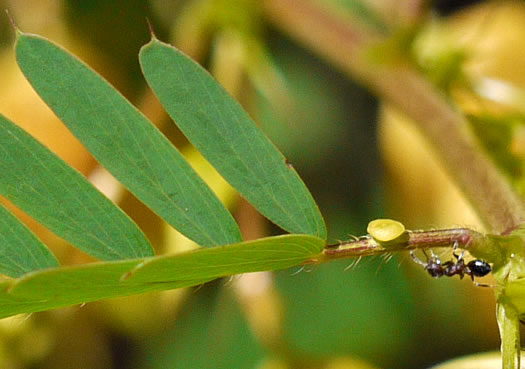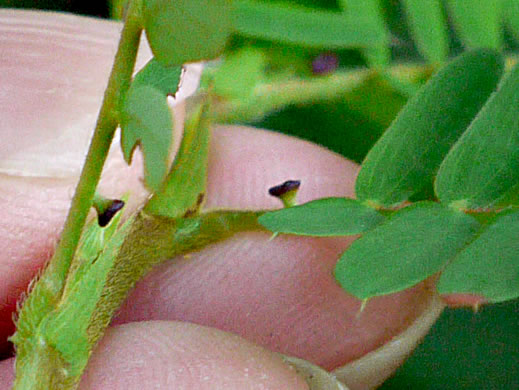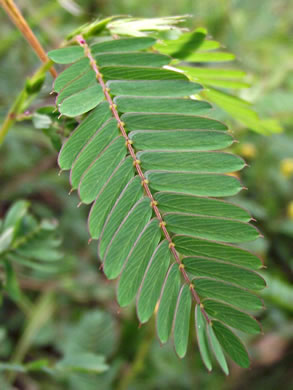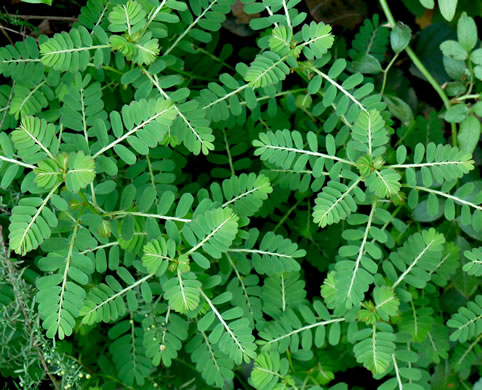Your search found 8 image(s) of leaflets of Mimosa-like leaves.
To see larger pictures, click or hover over the thumbnails.
To go to the plant's detail page, click its name.
 Mimosa,
Albizia julibrissin
Mimosa,
Albizia julibrissin
Leaflets strikingly asymmetric, 20-40 per pinna, sessile. Tree unarmed, per Vascular Flora of the Carolinas (Radford, Ahles, & Bell, 1968).
 Littleleaf Sensitive-briar,
Mimosa microphylla
Littleleaf Sensitive-briar,
Mimosa microphylla
Leaflets asymmetric, 20-32 per pinna, per Vascular Flora of the Carolinas (Radford, Ahles, & Bell, 1968).
 Littleleaf Sensitive-briar,
Mimosa microphylla
Littleleaf Sensitive-briar,
Mimosa microphylla
Bipinnate leaves with tiny leaflets that close when touched, per Weakley's Flora.
 Common Partridge-pea,
Chamaecrista fasciculata var. fasciculata
Common Partridge-pea,
Chamaecrista fasciculata var. fasciculata
5-18 pr of light-sensitive, linear-oblong leaflets [per leaf], per Wildflowers of Tennessee, the Ohio Valley, and the Southern Appalachians (Horn, Cathcart, Hemmerly, & Duhl, 2005).
 Common Partridge-pea,
Chamaecrista fasciculata var. fasciculata
Common Partridge-pea,
Chamaecrista fasciculata var. fasciculata
A sessile, saucer-shaped gland near the middle of the petiole, per Vascular Flora of the Carolinas (Radford, Ahles, & Bell, 1968).
 Sensitive Partridge-pea,
Chamaecrista nictitans var. nictitans
Sensitive Partridge-pea,
Chamaecrista nictitans var. nictitans
Leaves with a slender-stalked umbrella-shaped gland just below lowest leaflets, per Vascular Flora of the Carolinas (Radford, Ahles, & Bell, 1968).
 Sensitive Partridge-pea,
Chamaecrista nictitans var. nictitans
Sensitive Partridge-pea,
Chamaecrista nictitans var. nictitans
7-20 pr of light-and-touch-sensitive, linear-oblong leaflets [per leaf], per Wildflowers of Tennessee, the Ohio Valley, and the Southern Appalachians (Horn, Cathcart, Hemmerly, & Duhl, 2005).
 Chamber Bitter,
Emblica urinaria
Chamber Bitter,
Emblica urinaria
Superficially resembles Chamaecrista, but these are NOT compound leaves!

